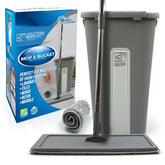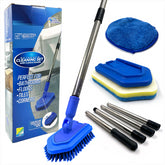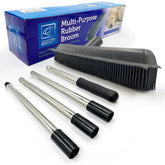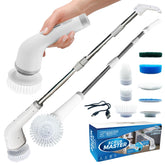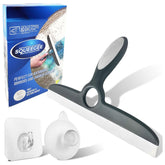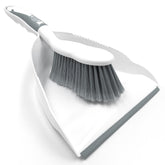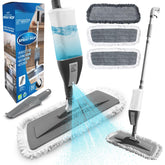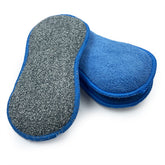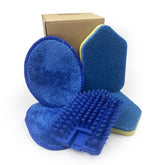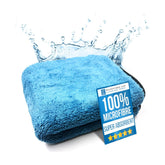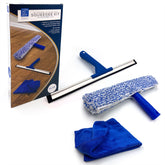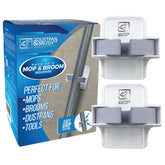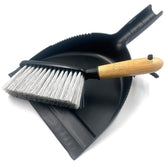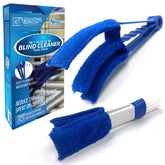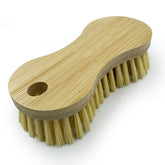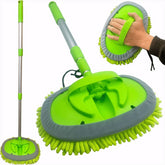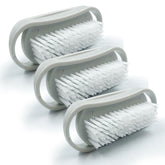How to Deep Clean your Fridge

Is your fridge dirty or smelly? Follow these simple steps below to keep your fridge clean, stop it smelling and protect your food from harmful bacteria, which can unfortunately lead to food poisoning… From milk spills and unsightly crumbs to forgotten veg at the bottom of the drawer, fridges can soon start to look messy and smell a little bit funny. But with a little care and attention, the most important appliance in your kitchen can look like new again.
Cleaning little and often is your best way to prevent unpleasant smells and stop bacteria from breeding, but it's still important to set aside some time to do a deep-clean every now and then, no matter how frequently you keep on top of cleaning it.
So for the steps…
How often should I clean my fridge?
You should aim to deep-clean your fridge two to four times a year. However general spills and crumb build-ups should be dealt with as you go.
When you do decide it's time for a deep clean, try and time it for when you have as little food in the fridge as possible (preferably just before your weekly food shop for example). It will mean less work emptying the fridge and you won't have to find space to put your food while you're cleaning.
Why it's important to clean your fridge regularly
The most important reason behind keeping your fridge clean is to prevent the breeding of germs that can cause diseases like food poisoning. We tend to pile up groceries without finishing the ones that we have stored already. This causes the old vegetables and fruits to rot and make space for germs to start breeding. The same thing happens when there is sauce spilt in the fridge and is not cleaned on time. The refrigerator being the most important thing in the whole kitchen, it is highly important to keep up with its maintenance.
How should I clean my fridge's interior?
1. Empty it. Empty the fridge of food and rake the opportunity to see whatever you have. Out-of-date items and a questionable-smelling pack of veggies and meat? Bin them! The cleaning process shouldn't take ages, but bacteria can quickly multiply at room temperature so don’t risk leaving them out too long on the kitchen counter while you work. If you think you may be a while, put them in a cooling bag if you have one
2. Remove the shelves and drawers. Remove interior shelving, drawers and door racks as much as you can before you start cleaning them. Don’t stand at an open door trying to clean them in the fridge as you’ll miss key areas.
Wash the removable parts. The shelving, drawers and door racks can be washed in the sink with washing-up liquid and hot water, if you appear to have a few tough stains use our easy grip sponge cleaner to tackle them without scratching the surface. Also, let your glass shelves warm up to room temperature before washing them or you'll risk them cracking from the heat.
Rinse everything off and leave it all to air dry on the draining board if you can. Alternatively, use a fresh cloth to dry the parts off and store them out of the way until you're ready to put them back in the fridge.
3. Choose your detergent. Use lukewarm soapy water to clean the fridge's interior surfaces. If you prefer a more natural cleaning solution, consider a vinegar spray (water with white vinegar) or a mix of bicarbonate of soda and water.
Avoid using harsh detergent sprays inside your fridge as the strong odour can linger and transfer to your food and no one wants that!
4. Wipe the inside, from top to bottom. Start your cleaning at the top. That way you won't have to worry about drips coming down on areas you've already cleaned. Clean the shelf ledges, the walls, basically everything you can see.
Finally, clean the base of the fridge where all the drips and crumbs tend to accumulate. Dry everything off properly with paper towels or a clean dish cloth.
How should I clean my fridge’s exterior?
Using soapy water, wipe down the doors and handles. With hands constantly in contact with them, fridge doors and handles can be germ hotspots. Make sure to give them a good clean, and feel free to break out a more powerful detergent to help eliminate bacteria, this is fine as it’s not going to be contaminating with your food.
Don't forget the edges of the fridge door. The top in particular can get a bit greasy and sticky over time, so pay a bit more attention to that part.
Wipe the door seals with a wet microfibre cloth. This is an important part as the door seals help prevent warm air getting inside the fridge. It's essential to keep them clean and free of dirt and rotted food.
Follow up with a dry microfibre cloth. Any leftover liquid in the seals will struggle to evaporate when the door is closed, which could lead to mould.
Keeping your fridge clean
With the fridge now fully clean, you're ready to get your food back inside.
Before you put items back in the fridge, take the chance to wipe down jars and condiment bottles that may have dirt or spilled sauce on them. You don't want to mess up your clean door racks and shelves after all that hard graft!
In the future, make sure to wipe up spills immediately and stay in the habit of checking food regularly so it doesn't go off and stink out the fridge.


